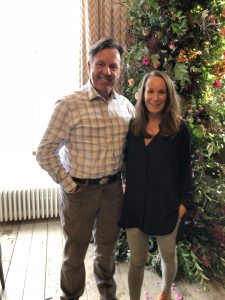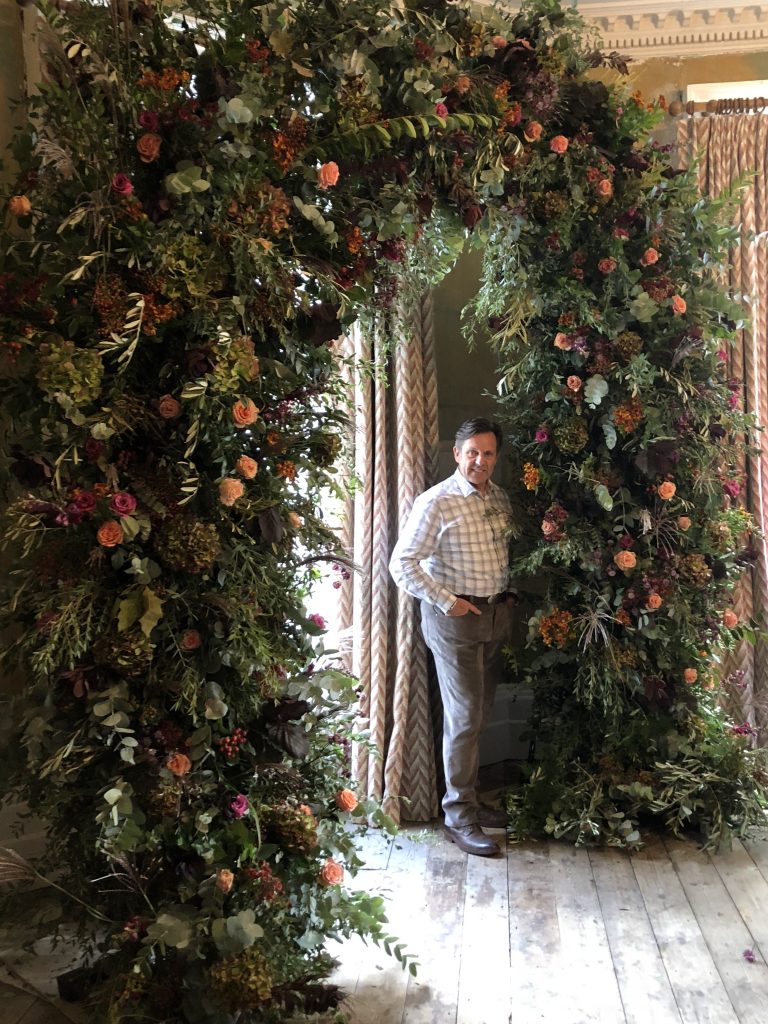Were you among the throngs admiring the lush arches of greenery and garden roses at Meghan and Harry’s wedding last May?
In late September, Tampa, Florist florist Ian Prosser, AAF, AIFD, PFCI, traveled across the pond to train with royal wedding florist Philippa Craddock and her assistants.
“In a way, it was like taking a step back in time,” said Prosser, of Botanical International Design Studio. “Philippa has gone completely sustainable, which means no floral foam. When I was starting out 45 years ago, Oasis had just come on the market and most of the florists I worked for used chicken wire exclusively.”
The five-day workshop refreshed Prosser’s memory on old-school techniques he’d forgotten, and taught him a few new tricks.
The group included 14 participants from nine different countries — Canada, Chile, Costa Rica, Croatia, England, Italy, Russia, Scotland and the U.S.
Participants had a chance to recreate a section of one of the arches from the wedding, which was about 15 feet high. They created cloud-like structures out of chicken wire to attach to the form in pieces, as well as “sausages” of moss, where they could add water.
“It was a hell of a lot of work,” Prosser said.
The course made Prosser “very grateful” for the invention of floral foam, which he described as a lifesaver in minimizing labor and keeping flowers hydrated (very crucial in the brutal Florida heat).
That said, he does intend to blend more chicken wire structures into his event work.
“Working with chicken wire forced me to design more freely,” he said. “When using foam, there’s a tendency to cut product down. But that’s not the organic, foliage-heavy look that girls want these days.”
In addition to learning how to construct the arches, Prosser discovered how the arches were weighed down to ensure they stayed put in the breeze and as hundreds of guests passed through them.
“It’s staggering to think how large designs have to be for royal weddings,” Prosser said. “It’s because the venues are so tremendous, and if the décor is not to scale, the whole aesthetic is ruined.”
Craddock told attendees about the grueling design process, when required her team to work 48 hours straight. She also shared a little about landing the job.
“It’s definitely not what we’re used to — where you sit down with the bride to learn her tastes and send a proposal after the consultation,” Prosser said. “Basically, Philippa was one of five London florists who submitted their ideas for what they’d do for a royal wedding. She got called in, thinking she was going to talk with the royal wedding planner but instead met with Meghan Markle.”

Prosser described Craddock as “a gentle soul” and “an absolute delight.” “It’s no hard to imagine her hitting it off with the duchess,” he said.
Prosser’s daughter, Zoe Gallina, Botanica’s creative designer started following Craddock on Instagram after the royal wedding and saw an ad for the workshop. During his time in the UK, Prosser shared behind the scenes photos on the company’s social media pages.
“The experience generated a lot of excitement,” he said. “Clients loved learning about the experience.”



